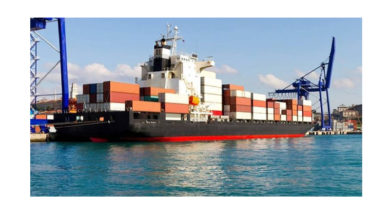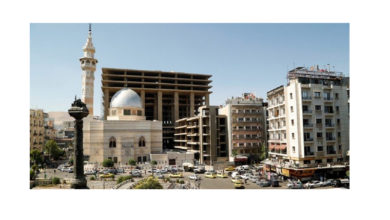6 Tips For Visually Striking Product Packaging
How To Make Your Product Stand Out
Essentially, the packaging you sell your product in serves as an advertisement. From the material of the package to the design of your product label, it’s crucial to carefully consider these decisions in order to best attract consumers, sell your product and represent your brand.
Packaging influences in-store and online purchasing. Consumers who are satisfied with a product’s packaging are more likely to purchase that product and are likely to try a new product due to satisfaction with its packaging*.
Even though consumers sometimes make decisions to buy a particular brand in a specific product category before going to the store, 28% of these pre-planned purchasers end up making an in-store decision to buy a different brand or product instead**. Therefore, the product packaging decisions you make impacts whether your products will be chosen over the competition.
Whether you’re making these decisions for the first time or are a seasoned veteran, I’ve outlined outlined 6 tips to guide you through the product packaging process.
1- Understand Your Audience
First and foremost, you must understand the preferences of the audience you are selling your product to. Consider what they want to see and prioritise their likes and preferences.
Remember, these are the people you are trying to convince to buy your product in the first place, so your packaging needs to reflect what they want to see – know what grabs their attention.
Ooh Ooh Ah Ah is a Belgian-based company that sells banana jams. Targeted towards children and their parents, the packaging is brightly coloured and features a loveable, happy monkey as their brand mascot – catching the eyes of children and the intrigue of parents.
Each box comes with three different flavour pots that is described on the packaging to appeal to the different tastes of all family members. Having won first place at The Dieline Package Design Awards in 2013, Ooh Ooh Ah Ah serves as an example of packaging that demands the attention of its target audience, and keeps it.

Image: Peck & Co.
2- Know What You Want Your Packaging To Say
When consumers see your product and begin to examine it, they will make inferences based on what the packaging says about the product – which includes descriptions, such as ingredients and nutritional information, quality cues, who it’s for, and the overall personality of your product and brand, contributing to the total value consumers believe they will be receiving when choosing your product.
Pangea is a skincare company that emphasises the experience attained from a more meaningful skincare routine, using only organic, cruelty-free, and when available, free-trade, ingredients. The bar soap packaging is made from completely recycled, biodegradable and compostable materials, containing seeds that can be planted by placing the package into the ground (in collaboration with Seeds of Change).
The goodness of its packaging emphasises the goodness of all-natural products and the company’s mission to represent Earth’s full lifecycle of each product ingredient. The actual design of the packaging is simple, representing it’s a bar of soap, offering a peephole so consumers can smell each unique blend of aromas.

Image: Pangea
3- Know How You Want It To Look: Packaging Design
The first step in deciding how you want your product to look is the type and design of the packaging itself. From the shape, style, and size, to the material and internal packaging of the product, choosing what kind of package to store your product is critical in ensuring that it’s well maintained from the time it’s manufactured to when it’s placed in front of the consumer.
Packaging design plays a significant role in grabbing the attention of consumers and guiding them through the information search process. During this process, consumers are learning about the product and is deciding whether or not it will meet their needs and expectations. In this stage, they may pick the product up, feel the packaging, discover more about it, and decide if it’s enticing enough to purchase.
Hey Cupcake! sells boxes that look like kitchen ovens to house cupcakes for takeaway orders. It’s a fun and interesting way for customers to carry their cupcakes home with them or deliver them as a personalised gift.
The package communicates their cupcakes are freshly baked and delicious enough to deserve special packaging. The signature light pink distinguishes the packaging from competitors and is an innovative way the company adds a special touch to its product.

Image: Hey Cupcake!
4- Know How You Want It To Look: Label Design
The second step when creating the overall look of your packaging is designing your product labels. It’s wise to consider consulting a professional designer as they possess the expertise to create a design that will best convey the intended message and can carry it through the printing and manufacturing process, which requires tricky technical specifications.
 Digital printing capabilities have created seemingly endless possibilities that add special touches and finishes to product labels. Hot foiling can add a distinctive shining touch, embossing creates texturing that provides an interactive element when consumers physically handle the product, and custom shaping ensures that the label will fit perfectly on your package to create a unique, individualised look.
Digital printing capabilities have created seemingly endless possibilities that add special touches and finishes to product labels. Hot foiling can add a distinctive shining touch, embossing creates texturing that provides an interactive element when consumers physically handle the product, and custom shaping ensures that the label will fit perfectly on your package to create a unique, individualised look.
“Don’t judge a book by its cover” doesn’t apply here. Label design is important and can mean standing out against the competition, or blending in.
Texas Range Honey manufactures organic honey that is as close to natural, raw honey as possible. While many label designs use fancy intricate images or a variety of colours, Texas Range Honey uses a simple, clean design to communicate this message about their product. The label is completely transparent, allowing the true product to shine through. All of the necessary information about the honey is printed clearly on the front of the label alongside a small graphic of the state of Texas, signifying that their honey is purely from Texas beekeepers.
Texas Range Honey is an example of a product label that undoubtedly communicates the brand message and product contents through using a crisp, minimal label design.
Image: Texas Range Honey
5- Make Your Design Flexible
Two words: Product Extensions. Even if you’re not considering it now, you may want to extend your product line in the future. Creating a flexible design will give you the freedom to create a consistent brand image if and when you decide to make a product extension.
This is especially vital for fast-moving consumer goods where a variety of flavours or fragrances of the same product are offered and where there is constant product development. Digital printing has lowered the cost of printing through multi-version runs, which provides the capability of printing multiple different designs in one printing run – taking away the hesitation of the mounting cost of multiple print jobs.
Notable examples of multiple design versions of the same product include Coca-Cola’s ‘Share a Coke’ campaign and Nutella jar labels that are personalised to individual names.
Pasta La Vista manufactures handmade, boxed pastas – which includes multiple products within the same category. Its quirky name and various cartoon chef personalities illustrates the different pasta types, featuring a different colour for each.
The clear packaging strip is cleverly placed on top of each character’s head and tucked under a chef’s hat to represent hair, which not only shows consumers exactly what they’re getting, but does it in an imaginative way. It’s easy to see how Pasta La Vista stands out on the shelf in the pasta aisle.

Image: Andrew Gorkovenko
6- Make It Eye-Catching: In-Person & Digitally
With social media and online information search becoming ever more important in the consumer decision-making process, it’s valuable to take into account how your product packaging will look in-person and on a computer screen – especially if you’re selling your product online.
Consumers are able to use all their senses when physically interacting with a product in the store, but must rely on sensory cues when examining products online, where visual appeals become paramount.
Additionally, digital interaction features on product packaging have provided physical products with digital engagement attributes, such as QR codes that consumers can scan with their smartphones, which then leads them online.
Gawatt is a coffee shop that has enlisted Backbone Branding to create the ultimate interactive coffee cup as part of its promotional material. While consumers can ‘play’ with the emotions of their coffee cups in person, anyone is also able to watch them in action through their computer screens, since, when viewed online, the gif demonstrates how the cup sleeve can be turned, revealing the different emotions of the character. This is an excellent example of a creative way to make packaging visually striking both in-person and digitally.
Remember, packaging matters more than you may think. It can sell your product – make it count. Hopefully these tips provide guidance for when you embark on the packaging design and production journey.

Image: Backbone Branding
* Source: ‘Strong Link Between Packaging Satisfaction, Consumer Purchasing Behavior’, 2015. Global Cosmetic Industry, p. 8. Available from: Business Source Complete.
** Source: Point of Purchase Advertising International (2012). “2012 Shopper Engagement Study: Media Topline Report”. The Global Association for Marketing at Retail. Available from: http://www.popai.fr/textes/Shopper_Engagement_Study.pdf





